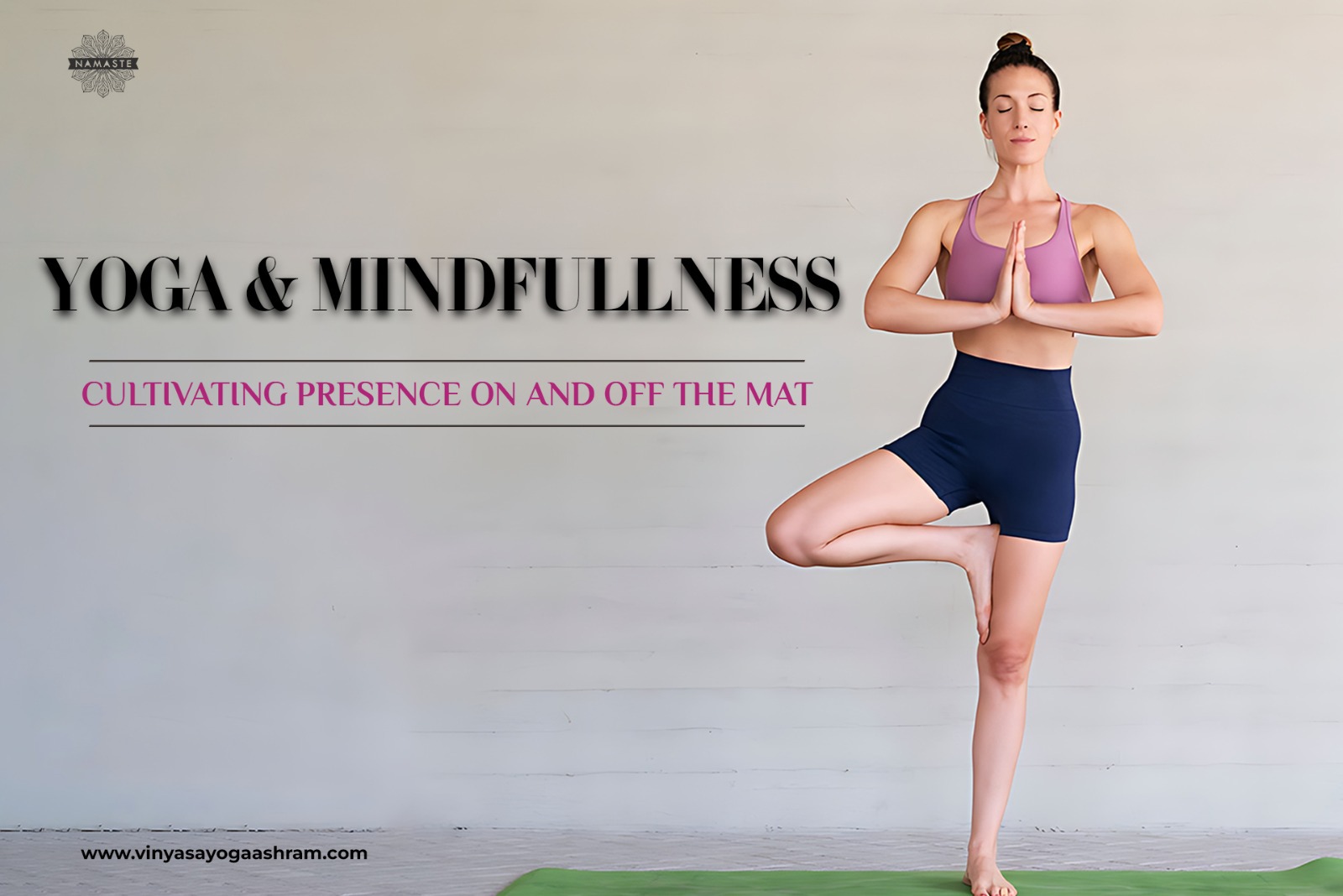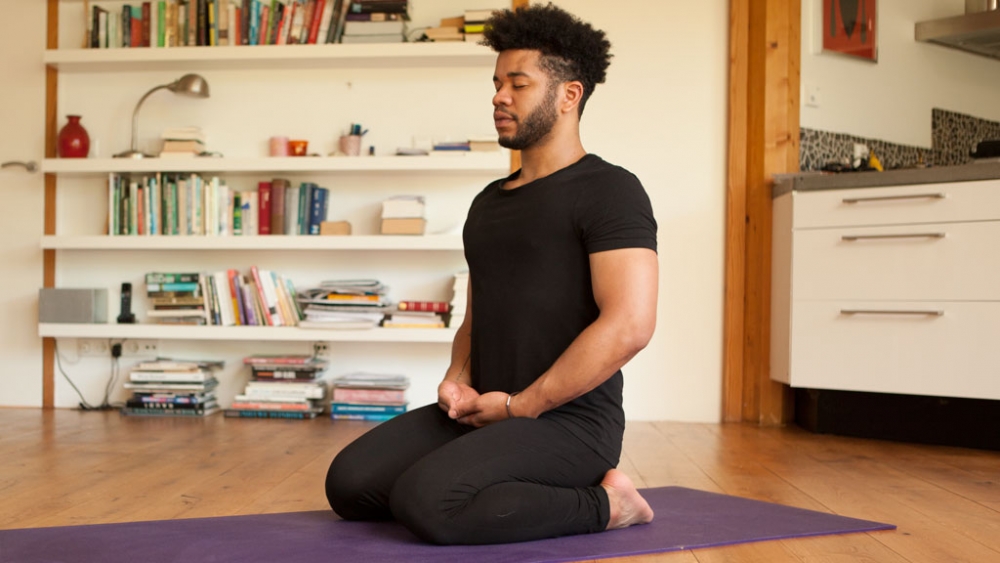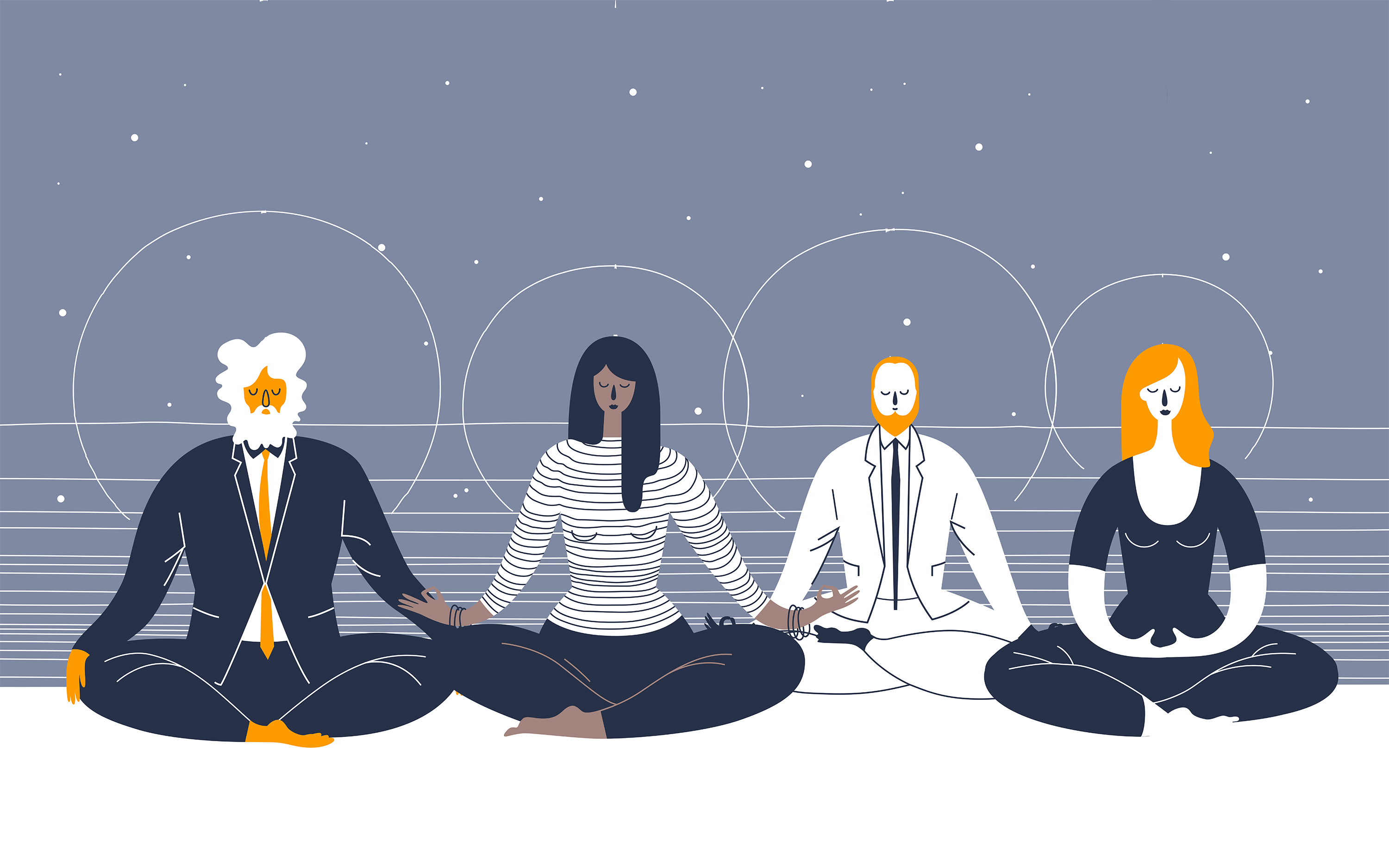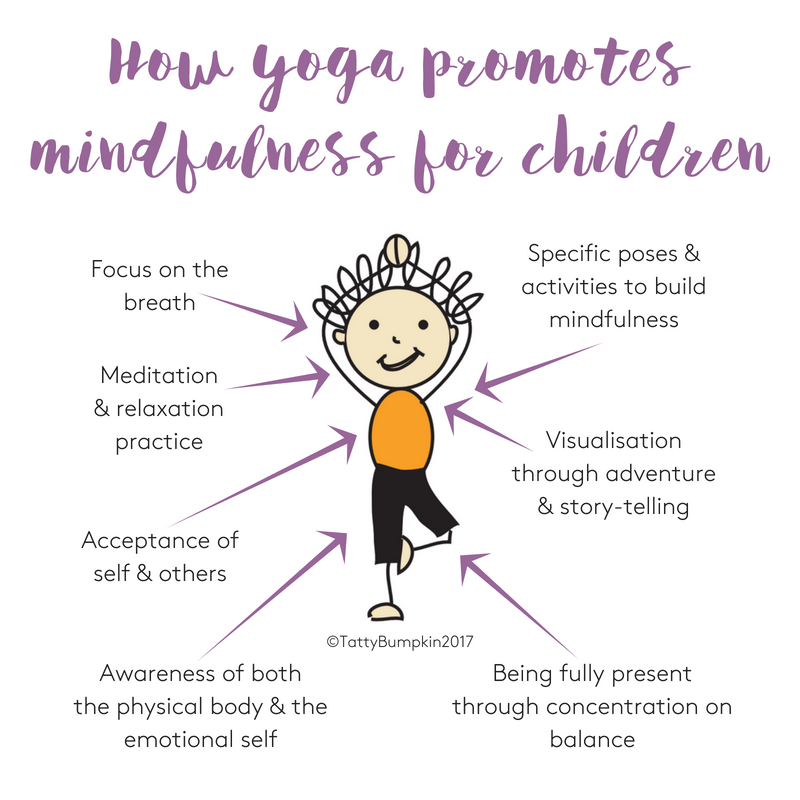To achieve mindfulness through yoga, focus on your breath and practice poses that encourage body awareness. Regular practice enhances mental clarity and relaxation.
Mindfulness is the practice of being fully present in the moment. Yoga, an ancient discipline, combines physical postures, breathing techniques, and meditation to foster mindfulness. Through yoga, individuals can tune into their bodies, quiet their minds, and cultivate a deeper sense of awareness.
Each yoga session encourages practitioners to focus on their breath and bodily sensations, promoting a state of mental tranquility. This mindful approach not only reduces stress but also improves overall well-being. By integrating yoga into your daily routine, you can achieve a balanced, mindful state that enhances both mental and physical health.
Introduction To Mindfulness And Yoga
Mindfulness and yoga are ancient practices. They help bring peace to the mind and body. Combining them can enhance your well-being. Let’s explore how to achieve mindfulness through yoga.
Benefits Of Mindfulness
- Reduces stress: Mindfulness helps calm your mind.
- Improves focus: It enhances your concentration.
- Boosts emotional health: It promotes better mood and emotional control.
- Enhances self-awareness: You become more aware of your thoughts and actions.
- Increases patience: Mindfulness teaches you to be patient and present.
Yoga As A Tool For Mindfulness
Yoga is a perfect tool for achieving mindfulness. It combines physical postures, breath control, and meditation. This makes it effective for calming the mind.
Here are some ways yoga helps achieve mindfulness:
- Breathing exercises: Yoga teaches deep breathing. It calms the mind and reduces stress.
- Physical postures: The poses require focus and balance. They bring your attention to the present moment.
- Meditation: Many yoga sessions end with meditation. This practice enhances mindfulness and self-awareness.
- Mindful movement: Moving through poses with awareness promotes a mind-body connection.
Yoga and mindfulness go hand in hand. Practicing yoga regularly can improve your mindfulness. It helps you stay present and aware in daily life.
| Yoga Pose | Mindfulness Benefit |
|---|---|
| Tree Pose | Improves balance and focus |
| Child’s Pose | Promotes relaxation |
| Warrior Pose | Enhances strength and concentration |
| Corpse Pose | Encourages deep relaxation and meditation |
Incorporating yoga into your routine can transform your life. It brings mindfulness to your body and mind. Start today and experience the benefits!

Credit: www.vinyasayogaashram.com
Basic Yoga Poses For Beginners
Starting yoga can be easy and fun. Basic poses help you gain flexibility and strength. They also aid in achieving mindfulness. Let’s explore some essential poses.
Mountain Pose
The Mountain Pose, or Tadasana, is a fundamental yoga pose. It helps improve posture and balance.
- Stand tall with feet together.
- Arms by your sides.
- Distribute your weight evenly.
- Engage your thigh muscles.
- Lift your chest and relax your shoulders.
This pose sets the foundation for all standing poses.
Child’s Pose
The Child’s Pose, or Balasana, is a restful yoga pose. It stretches the back and calms the mind.
- Kneel on the floor.
- Touch your big toes together.
- Sit back on your heels.
- Spread your knees apart.
- Bend forward and stretch your arms out.
Stay in this pose for a few breaths. It helps relax and rejuvenate you.
Breathing Techniques
Breathing is the foundation of mindfulness in yoga. It connects the mind and body. Through proper breathing techniques, you can achieve a deeper sense of calm. Two effective methods are Diaphragmatic Breathing and Alternate Nostril Breathing.
Diaphragmatic Breathing
Diaphragmatic Breathing involves using the diaphragm muscle. This method helps you take deeper breaths. Follow these steps:
- Sit or lie down comfortably.
- Place one hand on your chest and the other on your belly.
- Inhale deeply through your nose. Feel your belly rise.
- Exhale slowly through your mouth. Feel your belly fall.
Practice this technique for 5-10 minutes daily. It reduces stress and increases oxygen flow.
Alternate Nostril Breathing
Alternate Nostril Breathing balances the left and right sides of your brain. It calms the mind and improves concentration. Follow these steps:
- Sit in a comfortable position with your spine straight.
- Use your right thumb to close your right nostril.
- Inhale slowly through your left nostril.
- Close your left nostril with your right ring finger.
- Release your right nostril and exhale through it.
- Inhale through your right nostril.
- Close your right nostril and exhale through your left nostril.
Repeat this cycle 5-10 times. It helps to clear nasal passages and calm the mind.
| Technique | Benefits | Steps |
|---|---|---|
| Diaphragmatic Breathing | Reduces stress, increases oxygen flow. |
|
| Alternate Nostril Breathing | Calms mind, improves concentration. |
|
Incorporate these breathing techniques into your yoga practice. They will enhance your mindfulness and overall well-being.
Incorporating Meditation
Yoga and meditation go hand in hand. They help you find peace. Adding meditation to your yoga routine enhances mindfulness. It allows you to connect with yourself. You can try guided or silent meditation. Both have unique benefits.
Guided Meditation
Guided meditation involves listening to a guide. The guide helps you focus. You follow their instructions. This can be an audio recording. It can also be a live session.
Guided meditation helps you relax. It reduces stress. It also improves concentration. Beginners often find guided meditation easier. The guide keeps you on track.
- Listen to the guide’s voice.
- Follow their instructions.
- Stay focused on your breath.
Try guided meditation after your yoga practice. It adds a layer of mindfulness. You will feel more present and calm.
Silent Meditation
Silent meditation involves sitting quietly. There is no guide to follow. You focus on your breath. You can also focus on a mantra.
Silent meditation can be more challenging. It requires more discipline. Yet, it offers deep inner peace. You learn to control your thoughts.
- Find a quiet place.
- Sit comfortably.
- Close your eyes.
- Focus on your breath or mantra.
Start with a few minutes each day. Gradually increase the time. Silent meditation enhances your yoga practice. It helps you achieve mindfulness.
Creating A Routine
Creating a routine is essential for achieving mindfulness through yoga. A consistent schedule helps you stay committed and see progress. Here are some tips to create an effective yoga routine.
Setting A Schedule
Establishing a yoga schedule is crucial for consistency. Choose specific days and times that work best for you. For example, you can practice yoga every Monday, Wednesday, and Friday at 7 AM.
Consider using a weekly planner to track your sessions. This visual aid can help you stay organized and motivated. Here’s a simple table to plan your week:
| Day | Time | Activity |
|---|---|---|
| Monday | 7:00 AM | Yoga |
| Wednesday | 7:00 AM | Yoga |
| Friday | 7:00 AM | Yoga |
Choosing A Space
Find a quiet space for your yoga practice. This space should be free from distractions. A calm environment helps you focus better.
You can create a peaceful corner in your home. Add some yoga mats, cushions, and maybe a few plants. The goal is to make the space inviting and relaxing.
Here are some tips for choosing the perfect yoga space:
- Quiet – Select a noise-free area.
- Comfortable – Ensure the temperature is just right.
- Clean – Keep the area tidy and clutter-free.
By setting a schedule and choosing the right space, you can create a routine that supports your journey to mindfulness through yoga.

Credit: www.ekhartyoga.com
Mindfulness During Practice
Mindfulness during yoga practice can transform your experience. It helps you connect deeply with yourself. By being mindful, you stay in the present moment. This brings mental clarity and peace.
Focusing On Breath
Breath is the anchor for mindfulness in yoga. Every inhale and exhale should be intentional. Observe how the air enters your nostrils. Feel the rise and fall of your chest.
Here are steps to focus on breath:
- Start in a comfortable pose.
- Close your eyes softly.
- Inhale deeply through your nose.
- Hold the breath for a moment.
- Exhale slowly through your mouth.
Repeat this cycle. Notice the sensations in your body. Feel the rhythm of your breath. This keeps your mind focused and calm.
Being Present
Being present means fully engaging with the moment. Let go of past worries and future plans. Pay attention to each movement and sensation.
Try these tips to stay present:
- Observe your body’s alignment.
- Notice the stretch in your muscles.
- Feel the ground beneath your feet.
- Listen to the sounds around you.
Staying present improves your yoga practice. It enhances your awareness and deepens your connection.
Combining breath focus with being present boosts mindfulness. It makes your yoga practice more enriching and meaningful.
Advanced Yoga Techniques
Advanced yoga techniques are essential for achieving deeper mindfulness. These techniques help you connect mind and body. They increase your strength, flexibility, and focus.
Power Yoga
Power Yoga is a vigorous form of yoga. It involves fast-paced movements and poses. This style builds strength and endurance. Power Yoga helps burn calories and improves cardiovascular health.
- It increases your heart rate.
- Enhances stamina and flexibility.
- Perfect for weight loss and toning muscles.
Consistency is key in Power Yoga. Practice regularly for the best results. Remember to breathe deeply and stay focused.
Restorative Yoga
Restorative Yoga is a slow and calming practice. It focuses on relaxation and healing. This style uses props like blankets and blocks. These props support your body in various poses.
Benefits of Restorative Yoga:
- Reduces stress and anxiety.
- Improves sleep quality.
- Promotes deep relaxation.
Hold each pose for several minutes. Focus on your breath and let go of tension. This practice rejuvenates your mind and body.

Credit: www.mindful.org
Conclusion
Achieving mindfulness through yoga is both rewarding and transformative. Regular practice can enhance mental clarity and emotional well-being. Simple poses and breathing techniques are effective tools. Embrace yoga as a daily routine to experience lasting inner peace. Start your journey today to live a more mindful and balanced life.

